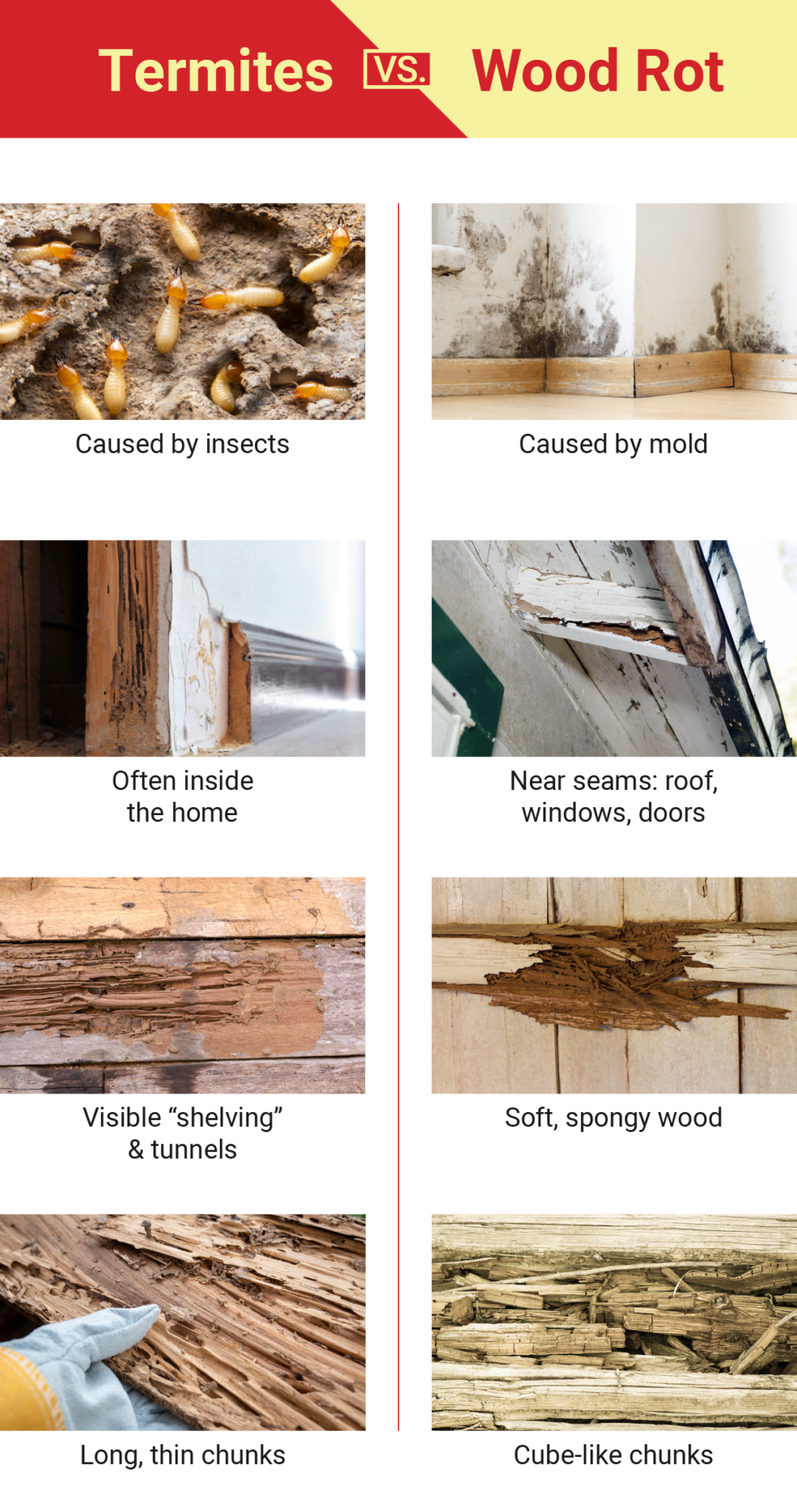Differences between termite damage and wood rot
While neither is fun to find in your home, understanding what kind of damage you have found is the first step in repairing it — and ensuring the problem does not come back.
One of the first major differences between termite damage and wood rot is where the evidence is located. Wood rot is typically found in places where the wood could be or has been exposed to water: near seams in the structure, roof seams, window frames, and door frames. If you see water stains around the rotten wood, there is a decent chance you are looking at wood rot.
Wood rot also tends to look dehydrated, contrary to its cause. After being flooded with moisture and broken down by mold, wood rot tends to dry out and split into cube-like chunks. Think of a dried-up lake bed: as the water evaporates from the previously drenched silt, sections of the clay shrink from each other and split apart in an almost giraffe-print pattern.
Termites, on the other hand, will produce damage to the wood in “shelves” and tunnels. The insects’ tunneling will form long, thin tiers in the wood, or you may see small, termite-sized holes and tunnels. Termite-damaged wood will be hollow and weak but slightly less crumbly than dry-rotted wood. Due to the elongated nature of the termites’ tunnels, pieces are more likely to break off in long, thin pieces. Damage isn’t the only sign of a termite infestation, but it’s a good place to start if you’re concerned about termite activity.
If you have determined that your home is suffering from wood rot and not termites, beware: wood rot can actually make wood in your home more appealing to termites in the future. If the wood still contains moisture, it has everything a termite colony could want in a new home. If the wood is no longer exposed to moisture, the weakened wood fibers are easier for termites to tunnel through and consume.



